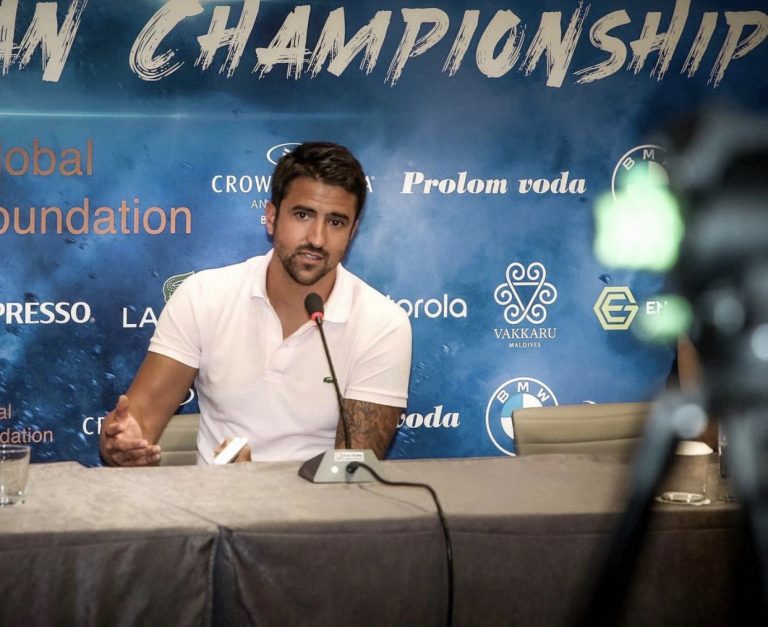Sport World School is proud to announce the partnership with the prestigious Tipsarevic Tennis Academy by the former World No. 8 and Serbian tennis star Janko Tipsarevic.
Tipsarevic Tennis Academy exists since 2012, and it started operating in Janko’s hometown Belgrade, but very soon, it spread beyond Serbia’s borders and now runs on an international level. This tennis academy works with children, starting from the age of 5, to grown-up tennis professionals who play at the highest possible level.
During his career, Tipsarevic was among the top 10 players in the world, ranking 8 on the ATP list, which is the best score in his career. In 2019 he retired from professional tennis, but he still stayed in the sports domain. Now he is trying to take the tennis world by storm but from a different perspective. Tipsarevic poured all his knowledge, skills, experience, and passion for tennis into this academy and he enjoys passing on what he learned to the younger generations.
From personal experience, Janko knows how hard it is to balance school and sports obligations, and young athletes are often forced to choose one or the other. With its high-quality online program, unique learning methodology designed to fit young athletes’ needs, Sport World school successfully solves that problem for young athletes, enabling them to get an education while working on their athletic careers. Several tennis players from Tipsarevic Tennis Academy are already our students, so two organizations decided to take this cooperation to the next level. From now on, our online schooling programs will be in a regular offer of Tipsarevic Tennis Academy.
In the spirit of the newly formed partnership, we spoke with Janko about his tennis academy, their unique methodology, and the values they are transferring to tennis players. We also touched upon the importance of education and what options players have with Sport World School.
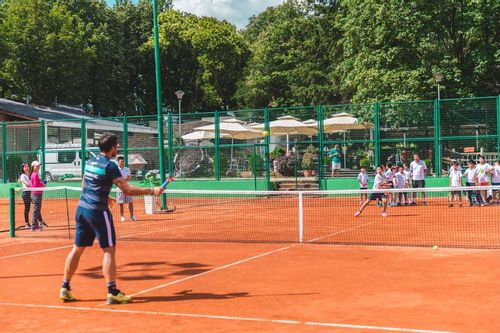
Prominent athletes usually want to contribute to the sports community and pass on the knowledge to the younger generation. Is that the Tipsarevic Tennis Academy story, or was something else that inspired you to start a tennis academy?
Quite early in my professional career, I believe it was in my mid-20s, I realized that I wanted to stay in tennis even after my athletic career. In what capacity, I didn’t know back then. The experience and knowledge that I gained in tennis, which I played since I was 6, were too valuable, so I wanted to use them. Also, I didn’t really want to start something from the beginning by entering an entirely new industry. After my family, tennis is the thing I love the most. I felt that I have an excellent foundation and knowledge, and I was surrounded by the right people, which is why I wanted to stay in tennis. On the other side, that educational moment on the court was always natural to me. I feel really good when I am sharing my knowledge and experience. Some athletes don’t see themselves in that role, but it was 100% me, and that is how the idea of a tennis academy was born. In 2012 we opened our first academy at New Belgrade, and really soon after that, we had to open another club because the previous courts were full. A few years later, we took the third club under our wing, and that is when I realized that we have to take that story to a higher level. We opened the academy at the famous sports center Olimp in Belgrade, with nine tennis courts. Soon after that, we started cooperating with several other sports clubs. Spreading our culture and our ecosystem gained a speed that I didn’t anticipate, at least not so soon.
Yet, Tipsarevic Tennis Academy is present abroad, not just in Belgrade (Serbia), what can you tell us about that?
We had a pretty nice start here in Serbia, and I knew it wasn’t because I am Janko Tipsarevic, and I played good tennis ten years ago. The reason for that lies in our culture and methodology. Also, we were encouraged by great feedback from our clients from abroad. Our clients in Serbia are mostly players from foreign countries, and often they would say to us that it would be nice that they have something like our academy at their home. I have always wanted to spread our methodology abroad. Two years ago, we opened our first international tennis academy in Shenzhen in China. The academy is present in three locations, has 27 courts and more than 1400 kids playing. Soon after that, we opened an academy in Cancun in Mexico with ten tennis courts. Last year, the pandemic slowed us down a little bit. In the next few months, we are supposed to open academies in Berlin (Germany), Tel Aviv (Israel), and Andalusia (Spain).
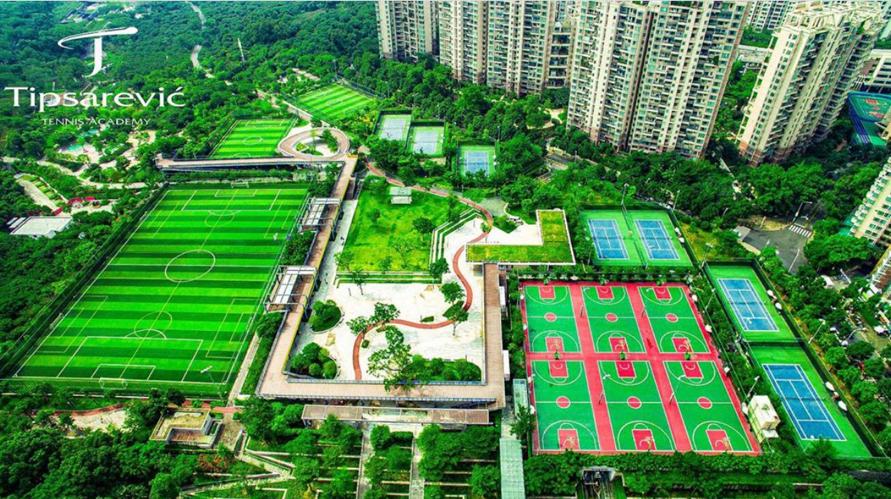
You previously mentioned the culture that Tipsarevic Tennis Academy incorporates in its working methodology. Can you tell us more about the values and culture, what makes you different from all others?
I have been lucky to grow up in one tennis club of medium size – it is TC As in Belgrade, so I took those initial cultural postulates of tennis organization from there – how a tennis club should work, from the back office to courts and the methodology of working with athletes. I think that every organization should develop a unique and recognizable method of working. Tennis academies often have the problem that there are too many coaches, but none of them follow the same standard. Everyone is doing what they think is the best. I don’t say that isn’t good, but if it is under the roof of a single academy, I think there should be recognizable working methods that everyone follows. And this goes for every organization, not just a tennis academy. We needed a lot of time to establish those things in our academy and on the court. But finally, we are starting to get recognizable because of that. A lot of things that we are practice has to do with the biomechanics of movement on the court. Tennis clubs usually don’t pay attention to that segment, but we put a lot of effort into it. I believe that a house is built from the foundation, and usually, when it comes to advising young athletes, the attention goes to some other things that are not as important. Significant things are neglected often. Our methodology spreads through all business branches, from tennis school to coaching of professionals who play on the highest level possible. I don’t say we are special, but our methodology singled us out from the rest.
Tell us more about the biomechanics of movement and why is it so important?
A lot of attention in coaching is dedicated to what we (tennis players) are doing from the hips and up, with the racket, hand, elbow, but the foundation of the house is neglected. The foundation is how we move on the court, the biomechanics of movement. If you build your foundation correctly, upgrade to the second, third, or fourth floor of the house will be easier. The same is in the sport. And it is generally, in all sports where the upper body of an athlete is more dominant, such as basketball, handball, or in this case tennis, a lot of coaches are teaching young athletes how to throw the ball, or how to play forehand, or how to do a penalty shot. No one is leaving time for practicing on how to move on the court. Let’s make a comparison. If you take some of the world’s best players, you will notice that their upper body and execution of a shot are individual. Djokovic has a different forehand than Federer. Federer’s forehand is then again different than Nadal’s, for example, and so on. But if you pay attention to the way they move on the court or position themselves on the court, you’ll notice 70-90% of similarities. Those are the aspects I believe we should teach young players, not more spin or less spin, or some other things that are not that important.
From what age can children join Tipsarevic Tennis Academy, and how the program looks like for your youngest players?
Tennis school starts with children age five or six. That beginning serves so the kids can adapt and fall in love in spending time on the tennis court. It’s not that we give them rackets and let them run left and right. They spend time on the tennis court and do different things. They play a little, hit the ball, hang around with friends, or do some other exercise. Through that, we are trying to instill in them that love for tennis and spending time on the tennis court, so in case they continue with playing, they’ll be used to being on the court for an extended time. They have practice twice a week.
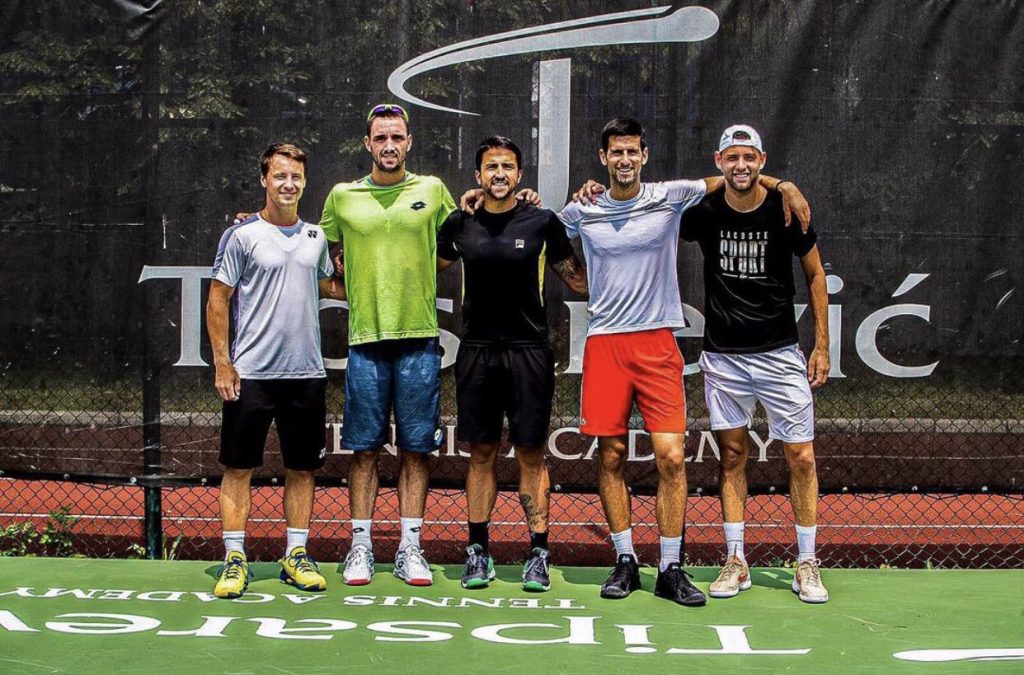
What lessons did you learn through tennis that you are trying to pass on to young players in your academy?
Well, there are always principles that each of us is learning at home. We bring those principles to the tennis court as well. I love to say that tennis is a game of life, although it sounds too emotional. During your tennis life, you are entirely alone on the court, and learning how to deal with that is a great asset not just in tennis but generally in life. You have to learn how to deal with pressure, fears, insecurities, and a lot of other things. We don’t have a team colleague to whom we can throw the ball. We have to do everything alone. The significant part of what we are trying to teach these young players starts with respecting the coach. It not like the coach is a bogeyman and you have to be afraid of him. It is a sort of a deal between a player and a coach. We try never to deviate from these little individual agreements. We don’t give up on that, no matter what, which is why our slogan is #KeepDigging. That is another trait that is so helpful, especially today, because too many young players are giving up in certain situations. Passing on that culture of not giving up to such young minds has a considerable success.
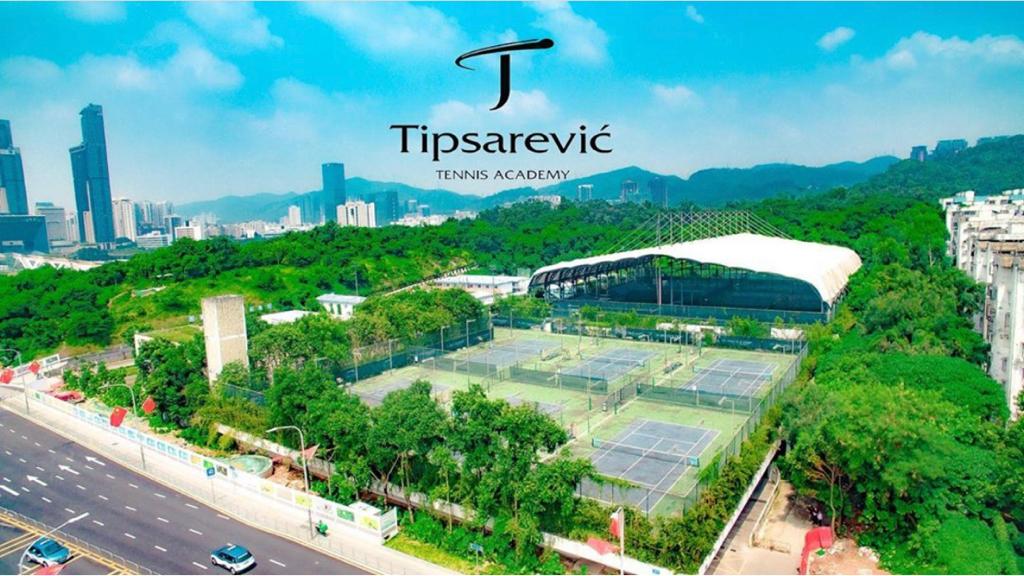
Let’s go back to when you were a kid. How did you balance school and sport, and did your teachers understand your athletic obligations?
One of the most challenging moments was the transition from elementary to high school. My mom always demanded from me to be a good student and bring home straight A’s. I had around 14 years in that period, and I started breaking out to the local and international scene. I played well, and I was winning tournaments, and I had to start practicing more seriously. That meant that I couldn’t go to school regularly. During that period, 8th grade, and the first year of my high school, my day had a crazy tempo – I get up in the morning, go to school from 8 AM to 1 PM, come home for lunch, go to practice from 3 to 5 PM and then I do condition training. I come home at 7 in the evening and do my homework until 9 PM and then go to bed. I think that was when I started getting some minor injuries because I couldn’t keep up with such tempo. What has been of great help to me was transferring to Polytechnic School, which allowed part-time schooling. Online schools were not a thing back then. Anyhow, that high school had quite flexible times for exams, which allowed me to train twice a day and dedicate myself to tennis.
Luckily, online schools are now a thing, and their flexibility perfectly fits young athletes’ obligations. Sport World School has an entire learning methodology that goes hand in hand with young athletes’ needs, enabling them to have both – education and an athletic career. How do you look at the partnership with Tipsarevic Tennis Academy and Sport World School, and in your opinion, how important is education?
I will go back to the values that we nurture here, and that is – no giving up. But from personal experience, I know what stubbornness in tennis brought to me. In the last five years of my career, I had seven surgeries, and I still didn’t give up. But in terms of education, I know how much a good online school would be a good choice for young tennis players who want to play tennis on a more serious level. If it is a sports school, you know that people who run and work in that school know the phases that young athletes are going through and their obligations. That is how the first cooperation between Tipsarevic Tennis Academy and Sport World School started, but now we aim to take that to the next level. I am thrilled and very proud of this partnership, and I think only the sky is the limit. It is essential to have options in your life. It has nothing to do with giving up, but not all players that come to Tipsarevic Tennis academy will be at the world’s top one day. So they must have other options. One of those options comes with education. I wouldn’t like that someone who comes to our academy has to neglect their education. And then, if one day, they don’t become a professional tennis player, for whatever reason, they can still have an option, because they are educated. Aside from that, I really liked that American colleges recognize Sport World School’s program. Through good tennis and schooling programs, kids can get free education through scholarships in some American colleges, where tuition fees go from 150.000 up to 200.000 dollars per year. This partnership with Sport World School closes the circle of what our academy has to offer to its clients.
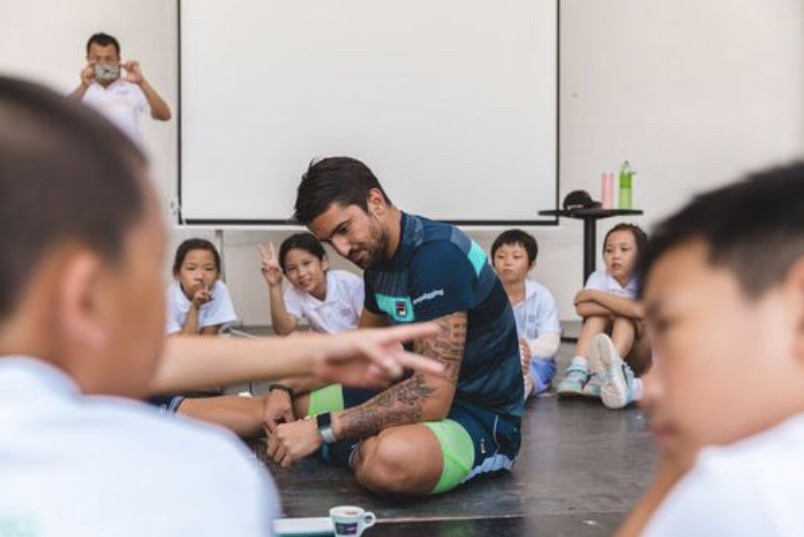
For more details about Tipsarevic Tennis Academy visit their website www.tipsarevictennisacademy.com and if you want to find out more about our schooling program, feel free to write to us at info@sportworldschool.com.
#HaveItAll
#KeepDigging
Let’s connect on social media
Insta: @tipsarevictennisacademy
Insta: @sportworldschool
